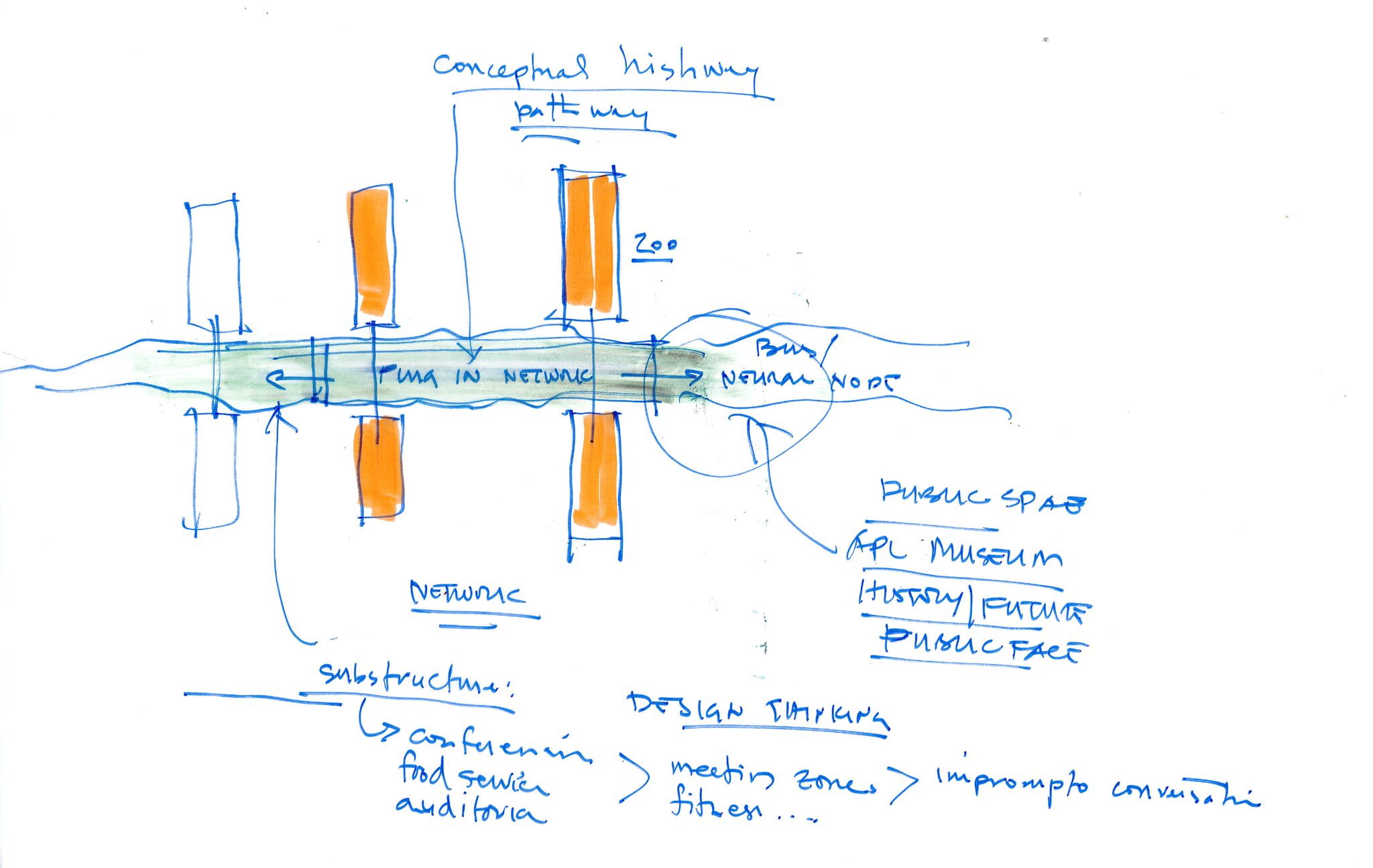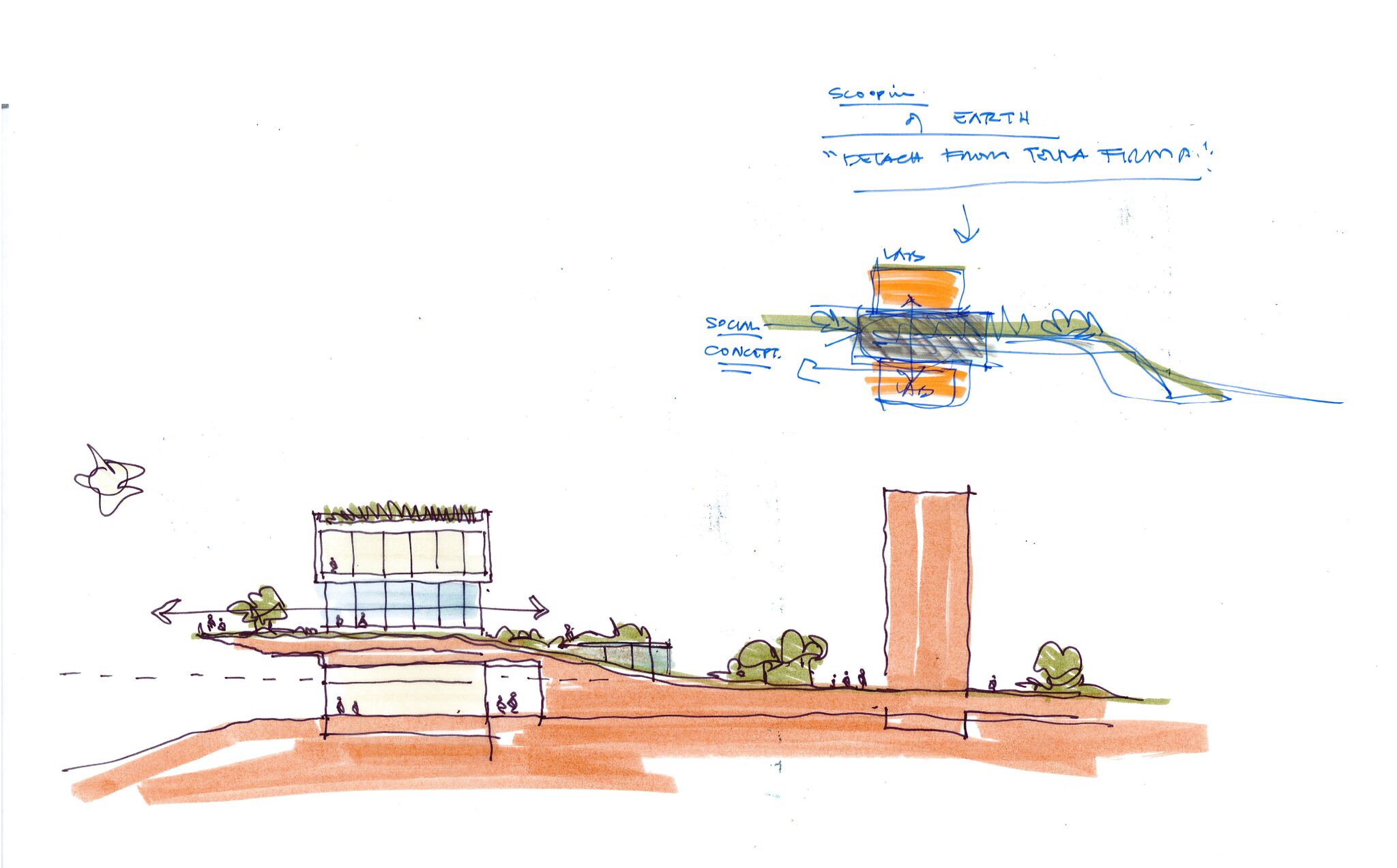The Generative Power of Naming & Drawing
Contributor
Nomenclature
VICTOR AGRAN (Lecturer, Yale School of Architecture)

Figure 1: Neural Highway

Figure 2: Detach from Terra Firma
Drawing has evolved as a rhetorical device and a method of conveying ideas to patrons and larger audiences. The dominant paradigms of drawing remained largely constant from the Renaissance until the recent digital revolution, and drawing as a discipline worked within established boundaries. Those limits conferred a tradition of rigor and visual literacy on drawing practice, and, owing to a common language, drawing as a generative and interrogative tool was potent.
Writing recently in the Journal of Architectural Education, Amy Kulper described what she termed the discursive image as “loaded…with information, replete with spatial articulation…and overflowing with interpretive possibilities…that seeks to position both discovery and invention at the forefront of drawing practice.”[1] Following her example, drawing as a generative and rhetorical mechanism can have enormous potential.
Prior to the development of the discursive image described by Kulper, however, there is a beginning: a point in a project where the canvas is blank and a guiding conceptual frame can feel like a distant goal. The question, then, is where to mine for interpretive possibility from the start. The generative spark of a name can establish rhetorical structure, and unlike the literal definition of discursive, allow for a clear organizing framework: words carry precise meaning, as well as inference and nuance derived from our understanding of language.
In developing early sketches for a science campus, nomenclature has helped to establish a thesis that informs both our conceptual agenda and the client’s building program. In this case, there are two points of departure: Neural Highway (fig. 1) and Detach from Terra Firma (fig. 2). Each carries with it a set of implications that sets the stage for more rigorous conceptual positions to carry the project from concept to built form.
Ultimately, drawing is akin to writing. The use of language as the primary rhetorical device at the outset provides the rigor of precise word choice, and the layered connotation of a “name” creates flexibility to explore a range of conceptual trajectories as a project evolves.
[1] Journal of Architectural Education, Amy Kulper Drawing Forth Difference JAE Volume 70 March 2016